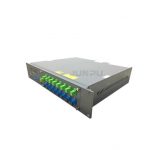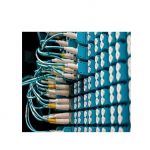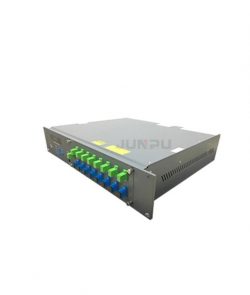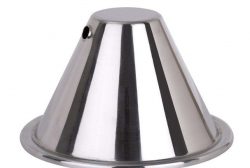EDFA
The JP0816EA(1RU) series is a high-power multi-ports optical amplifier designed for CATV applications. It operates within the gain spectrum band of 1540~1563nm, providing a flexible and cost-effective solution for large-scale CATV coverage in metropolises and medium-sized cities. This amplifier utilizes top-class pump laser and active optical fiber, ensuring long-term and reliable operation. With low noise figure and twin-stage amplification, it offers high-quality signal amplification even at low input power. The front-panel LCD displays equipment status and alerts, while the automatic power-off feature ensures laser security. With options for optical input and network management, it is an ideal choice for system integrators and operators prioritizing reliability and cost-effectiveness.
Types of Erbium-doped Fiber Amplifier
JP0110OEA EDFA
JP0110OEA EDFA
JP0816EA EDFA
JP0816EA EDFA
JP3216EA EDFA
JP3216EA EDFA
Key Components of the EDFA
1. Erbium-Doped Fiber (EDF):
The heart of an EDFA is the erbium-doped fiber, which contains erbium ions (Er3+) incorporated into the silica glass matrix. When optical signals pass through this doped fiber, the erbium ions are excited and emit photons, effectively amplifying the signal. The EDF is the amplification medium in the EDFA.
2. Pump Laser Diodes:
Pump laser diodes are used to excite the erbium ions within the EDF. They emit high-energy photons at a specific wavelength (usually around 980 nm or 1480 nm) that match the absorption bands of erbium ions. These photons are used to “pump” or energize the erbium ions to higher energy levels.
3. Wavelength Division Multiplexer (WDM):
A WDM component is used to combine the input signal (the signal to be amplified) and the pump laser diode signals into the erbium-doped fiber. It ensures that the pump light is efficiently coupled into the EDF to excite the erbium ions.
4. Isolators and Optical Filters:
Isolators and optical filters are used to prevent back reflections and to separate amplified signals from input and output signals. They ensure that amplified light travels in one direction within the EDFA and that the signal-to-noise ratio remains high.
5. Optical Couplers and Connectors:
Optical couplers and connectors are used to couple the input and output fibers to the EDFA. Input signals are fed into the EDF, and the amplified output signals are extracted from the EDFA through these components.
Applications of EDFAs in Long-Haul Optical Networks
Erbium-Doped Fiber Amplifiers (EDFAs) are vital components in long-haul optical networks, enhancing signal strength over extended distances. Here are four key applications:
1. Signal Regeneration: EDFAs boost optical signals, compensating for signal loss in long-distance transmission.
2. Wavelength Division Multiplexing (WDM): EDFAs amplify multiple wavelengths simultaneously, enabling efficient data transmission in WDM systems.
3. Submarine Cable Systems: EDFAs amplify signals across undersea fiber optic cables, facilitating global data connectivity.
4. Telecommunications Backbone: They serve as signal repeaters in terrestrial optical backbone networks, ensuring data integrity over vast distances.











